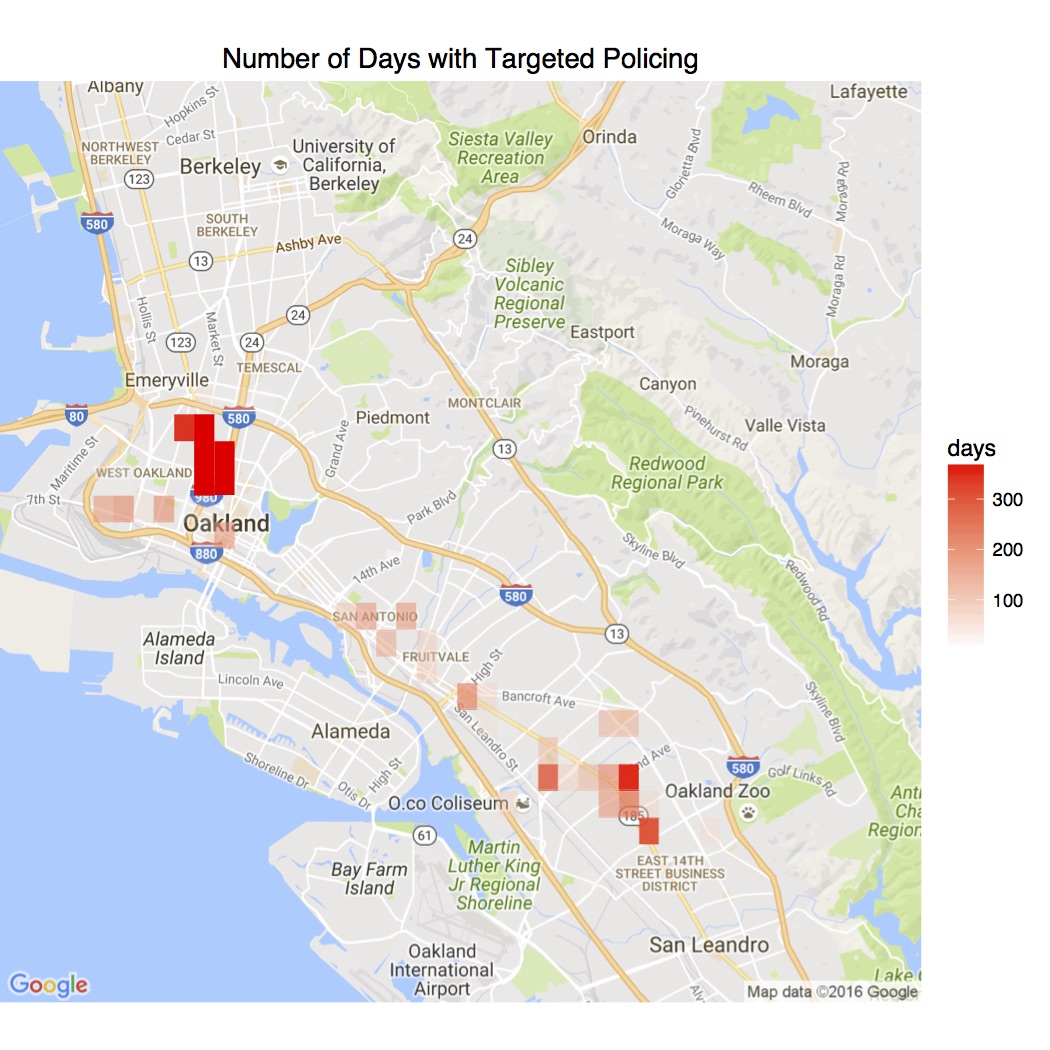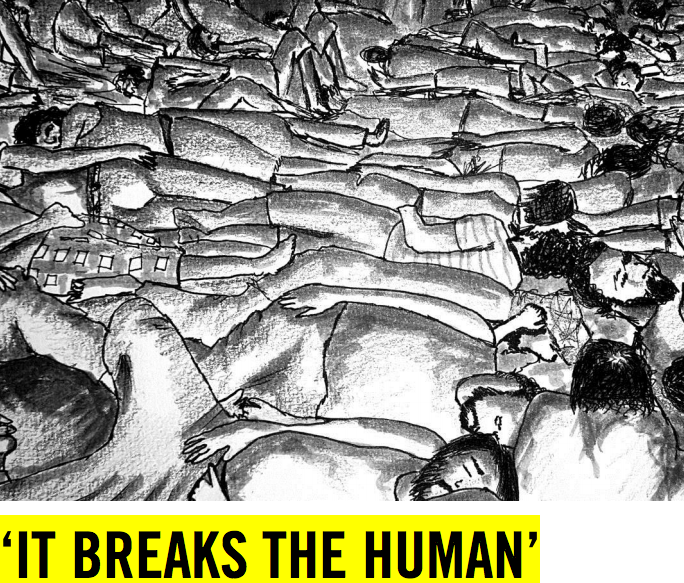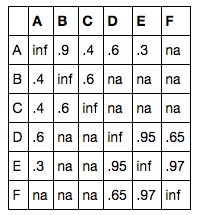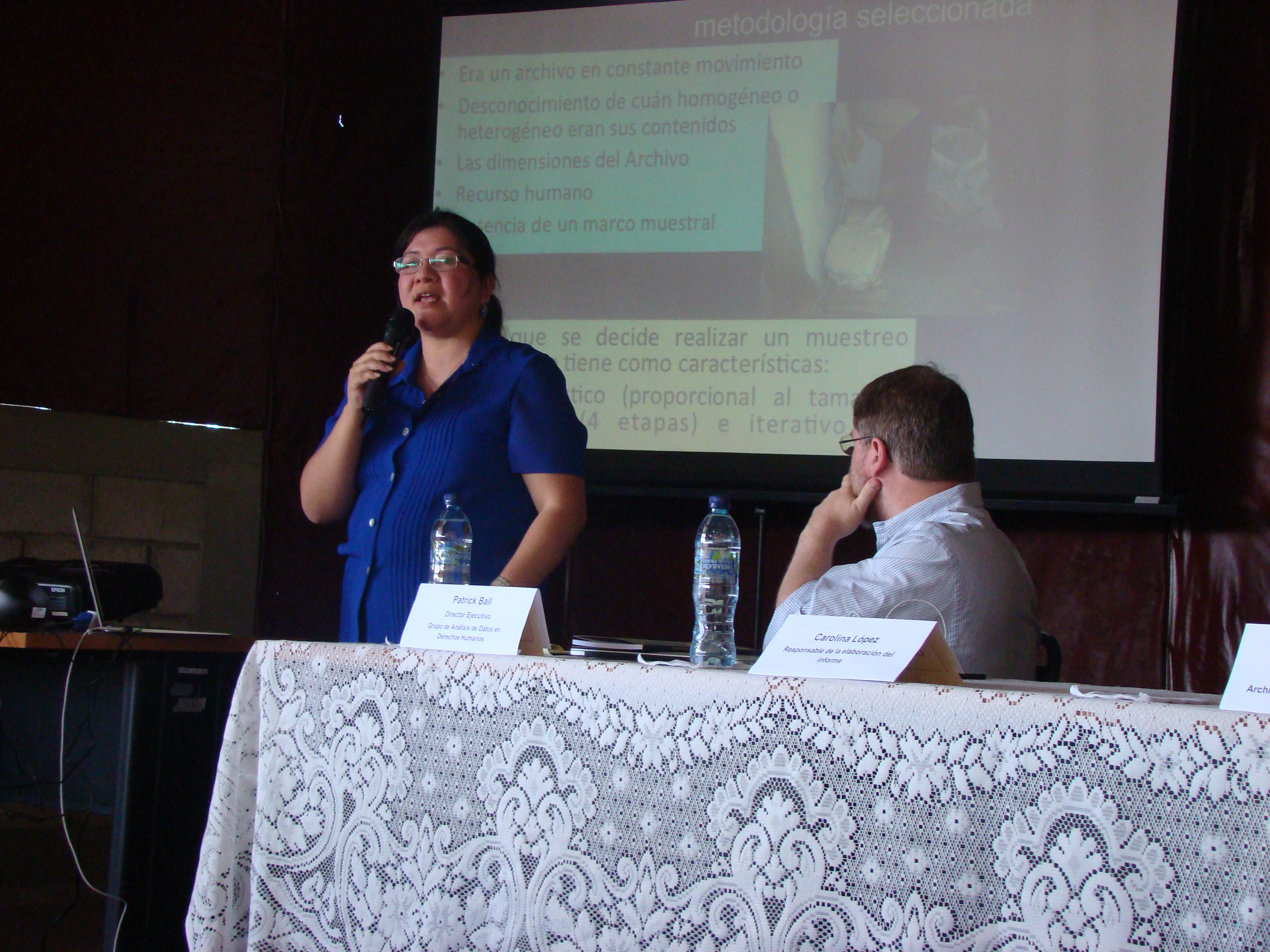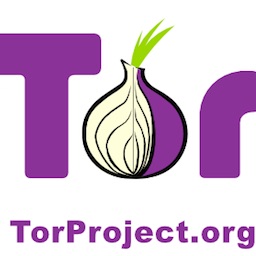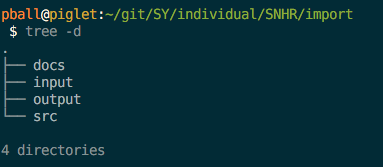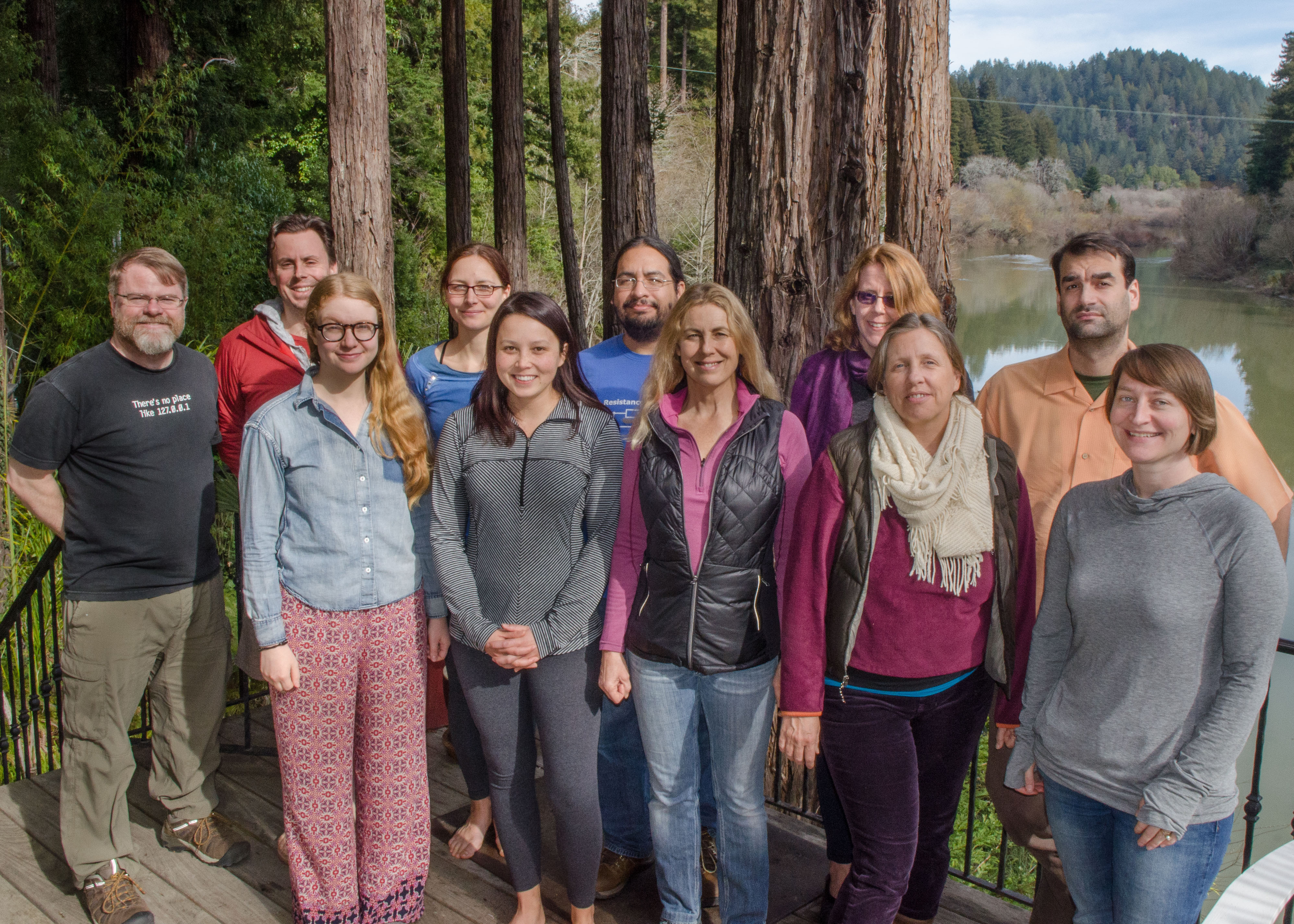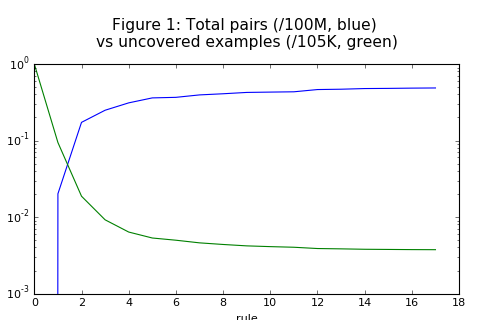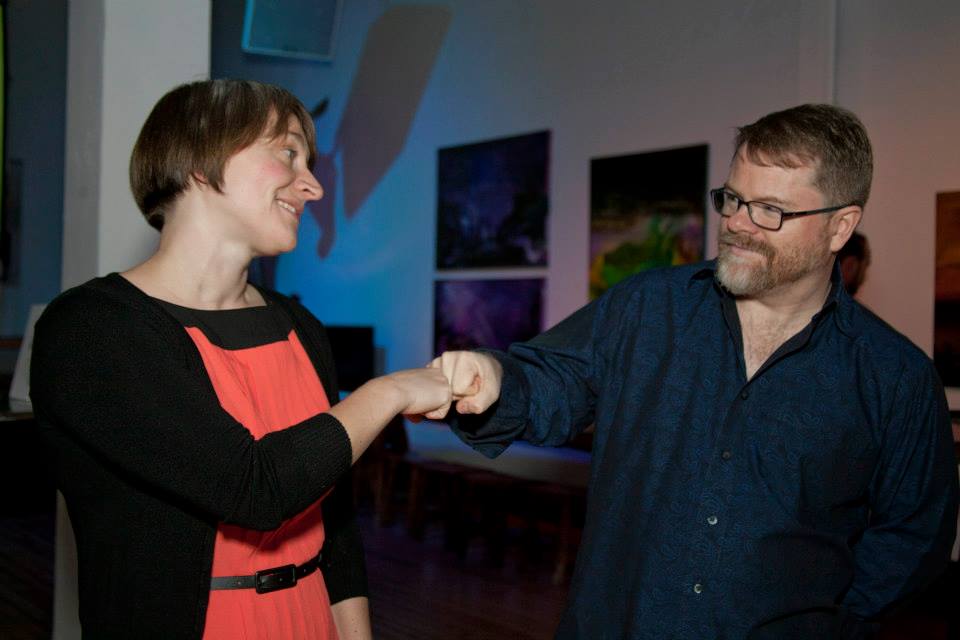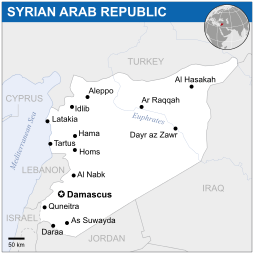FAQs on Predictive Policing and Bias
Last month Significance magazine published an article on the topic of predictive policing and police bias, which I co-authored with William Isaac. Since then, we've published a blogpost about it and fielded a few recurring questions. Here they are, along with our responses.
Do your findings still apply given that PredPol uses crime reports rather than arrests as training data?
Because this article was meant for an audience that is not necessarily well-versed in criminal justice data and we were under a strict word limit, we simplified language in describing the data. ...
Training with HRDAG: Rules for Organizing Data and More
I had the pleasure of working with Patrick Ball at the HRDAG office in San Francisco for a week during summer 2016. I knew Patrick from two workshops he previously hosted at the University of Washington’s Centre for Human Rights (UWCHR). The workshops were indispensable to us at UWCHR as we worked to publish a number of datasets on human rights violations during the El Salvador Civil War. The training was all the more helpful because the HRDAG team was so familiar with the data. As part of an impressive career which took him from Ethiopia and Kosovo to Haiti and El ...
Using MSE to Estimate Unobserved Events
At HRDAG, we worry about what we don't know. Specifically, we worry about how we can use statistical techniques to estimate homicides that are not observed by human rights groups. Based on what we've seen studying many conflicts over the last 25 years, what we don't know is often quite different from what we do know.
The technique we use most often to estimate what we don't know is called "multiple systems estimation." In this medium-technical post, I explain how to organize data and use three R packages to estimate unobserved events.
Click here for Computing ...
HRDAG Names New Board Members Julie Broome and Frank Schulenburg
We are pleased to announce that HRDAG will be supported by two additions to our Advisory Board, Julie Broome and Frank Schulenburg.
We’ve worked with Julie for many years, getting to know her when she was Director of Programmes at The Sigrid Rausing Trust. She is now the Director of London-based Ariadne, a network of European funders and philanthropists. She worked at the Trust for seven years, most notably Head of Human Rights, before becoming Director of Programmes in 2014. Before joining the Trust she was Programme Director at the CEELI Institute in Prague, where ...
Predictive Policing Reinforces Police Bias
Issues surrounding policing in the United States are at the forefront of our national attention. Among these is the use of “predictive policing,” which is the application of statistical or machine learning models to police data, with the goal of predicting where or by whom crime will be committed in the future. Today Significance magazine published an article on this topic that I co-authored with William Isaac. Significance has kindly made this article open access (free!) for all of October. In the article we demonstrate the mechanism by which the use of predictive ...
Judges in Habré Trial Cite HRDAG Analysis
Three months after the announcement of the momentous verdict finding former Chadian president Hissène Habré guilty of crimes against humanity, the presiding judges have released the full, written 681-page judgment of the court. Testimony given by HRDAG’s director of research, Patrick Ball, is mentioned at three points in the verdict.
The judges included in their written judgment the HRDAG analysis that the mortality rate in Habré prisons was staggeringly high—much higher than the mortality rate among the population as a whole. Here’s an excerpt from the ...
HRDAG and Amnesty International: Prison Mortality in Syria
Today Amnesty International released “‘It breaks the human’: Torture, disease and death in Syria’s prisons ,” a report detailing the conditions and mortality in Syrian prisons from 2011 to 2015, including data analysis conducted by HRDAG.
The report provides harrowing accounts of ill treatment of detainees in Syrian prisons since the conflict erupted in March 2011, and publishes HRDAG’s estimate of the number of killings that occurred inside the prisons.
To accompany the report, HRDAG has released a technical memo that explains the methodology, ...
Clustering and Solving the Right Problem
In our database deduplication work, we’re trying to figure out which records refer to the same person, and which other records refer to different people.
We write software that looks at tens of millions of pairs of records. We calculate a model that assigns each pair of records a probability that the pair of records refers to the same person. This step is called pairwise classification.
However, there may be more than just one pair of records that refer to the same person. Sometimes three, four, or more reports of the same death are recorded.
So once we have all ...
HRDAG and AHPN Launch Book Detailing Collaboration
Earlier this month, HRDAG and the Historic Archive of the National Police (AHPN) of Guatemala launched a book that represents a long-time collaboration between the two organizations. The book, “Una mirada al AHPN a partir de un studio de cuantitativo,” is, as the title states, a look at the Archive’s datasets via a quantitative study. Book authors are HRDAG executive director Megan Price and AHPN colleague Carolina López, with translations by Beatriz Vejarano. The book is available in Spanish and forthcoming in English.
The book explains how HRDAG and the Archive ...
Megan Price Elected Board Member of Tor Project
Today The Tor Project announced that it has elected a new Board of Directors, and among them is HRDAG executive director Megan Price. The Tor Project is a nonprofit advocacy group that promotes online privacy and provides software that helps users opt out of online tracking.
Megan and Patrick have long maintained that encryption and privacy are essential for enabling human rights work. Patrick's ideas are described in Monday's FedScoop story about encryption, human rights, and the U.S. State Department.
“Human rights groups depend on strong cryptography in order ...
The task is a quantum of workflow
This post describes how we organize our work over ten years, twenty analysts, dozens of countries, and hundreds of projects: we start with a task. A task is a single chunk of work, a quantum of workflow. Each task is self-contained and self-documenting; I'll talk about these ideas at length below. We try to keep each task as small as possible, which makes it easy to understand what the task is doing, and how to test whether the results are correct.
In the example I'll describe here, I'm going to describe work from our Syria database matching project, which ...
Momentous Verdict against Hissène Habré
Today we’re very pleased to hear of the verdict finding Hissène Habré guilty of crimes against humanity. Habré, president of Chad from 1982 to 1990, has been sentenced to life in prison in Dakar, Senegal, where he was tried. He is the first former head of state to be tried and found guilty of crimes against humanity in one country (Chad) by the courts of another country (Senegal). Here’s more on the verdict from The Guardian.
The verdict resonates especially with HRDAG because of our role in the trial. In September 2015, director of research Patrick Ball ...
The case of Ana Lucrecia Orellana Stormont
When working with documents in an archive, every document offers the opportunity for statistical study and quantitative research. But a document can also offer the discovery of a story. That is the case with the disappearance of Ana Lucrecia Orellana Stormont, who was reported missing on June 6, 1983, at the age of 35.
Ana Lucrecia, a professor of psychology at the University of San Carlos, was scheduled to attend a meeting with Edgar Raúl Rivas Rodríguez at the Plaza Hotel in Guatemala’s capital city. Edgar, who also went missing, was a teacher at the School of ...
HRDAG Retreat 2016
What do you get when you bring seven statisticians, one quantitative political scientist, a writer, a computer scientist, and an administrator together for four days in a vacation rental on California’s Russian River? A lot of code, a technical paper and book chapter revised, another paper started, a great hike in the Redwoods, descriptions of food poisoning and crash landings in war zones, and a lot of talk about feelings.
Did I mention feelings? On the first evening of the annual retreat of the Human Rights Data Analysis Group, executive director Megan Price asked ...
Data Archaeology for Human Rights in Central America: HRDAG Collaborates with UWCHR
Patrick Ball is kicking himself for a decision he made almost 25 years ago. “I was clever, but I wasn’t smart,” he says ruefully, as he considers the labyrinth of tables and ASCII-encoded keystrings he used to design a database of human rights violations for the pioneering Salvadoran non-governmental Human Rights Commission (CDHES). Now I’m sitting in his office in San Francisco’s Mission District watching over his shoulder, and trying to keep up, as he bangs out code to decipher the priceless data contained in these old files. Created in 1991 and 1992, ...
A geeky deep-dive: database deduplication to identify victims of human rights violations
In our work, we merge many databases to figure out how many people have been killed in violent conflict. Merging is a lot harder than you might think.
Many of the database records refer to the same people--the records are duplicated. We want to identify and link all the records that refer to the same victims so that each victim is counted only once, and so that we can use the structure of overlapping records to do multiple systems estimation.
Merging records that refer to the same person is called entity resolution, database deduplication, or record linkage. For ...
Welcoming a New Board Member
As we get ready to begin our fourth year as an independent nonprofit, we are, as always, indebted to our Advisory Board and to our funders for their support and vision. We’re finishing up a busy year that took us to Dakar (for the trial of former Chadian dictator Hissène Habré), Pristina (for the release of the Kosovo Memory Book), Colombia (for work on a book about the Guatemalan Police Archives), and kept us busy here at home working on police violence statistics. But one of our biggest victories has been to score a new, talented, wise Advisory Board member—Michael ...
An Award for Anita Gohdes
On November 26, HRDAG colleague Anita Gohdes was awarded the German Dissertation Prize for the Social Sciences. The patron of the prize is the President of the German Parliament, Norbert Lammert, who presented Anita with the award.
Anita’s dissertation, “Repression 2.0: The Internet in the War Arsenal of Modern Dictators,” investigates the role played by social media networks in modern dictatorships, such as President Assad’s regime in Syria. On one hand, Anita argues, social media can help opposition groups to organize more effectively, but on the other ...
Changes at HRDAG
A special announcement from the HRDAG Advisory Board:
Beginning officially on December 1, HRDAG is changing leadership. After nearly three years as Executive Director, Patrick Ball will become the new Director of Research. Megan Price will be the new Executive Director.
Patrick has spent more than 25 years working at the intersection of human rights and statistical science. Over that time, he has finely honed statistical methodology for quantifying mass killings. Now he is excited about the chance to go deeper into research for HRDAG and develop additional approach...
Rapid response to: Civilian deaths from weapons used in the Syrian conflict
On November 4, 2015, the BMJ published our "Rapid Response" to Civilian deaths from weapons used in the Syrian conflict (BMJ 2015;351:h4736). The response was co-authored by Megan Price, Anita Gohdes, Jay Aronson (Carnegie Mellon University, Center for Human Rights Science), and Christopher McNaboe (Carter Center, Syria Conflict Mapping Project).
We have three concerns about this article. First, the article apportions responsibility for casualties to particular perpetrator organizations based on a single snapshot of territorial control that ignores the numerous (and ...

